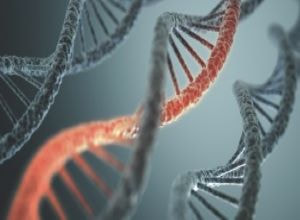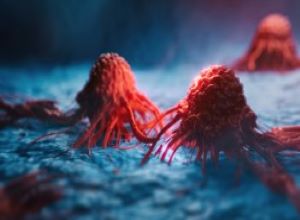|
December 2020 SCIENTISTS UNRAVEL ZEBRAFISH EPIGENOMEFeaturing: Feng Yue, PhD
A new study led by Northwestern Medicine investigators has identified tissue-specific epigenetic regulators and profiled the three-dimensional genome structure of zebrafish, filling in a longtime knowledge gap in the understanding of the organism’s genome. The findings, published in Nature, could help scientists use the model organism to unravel human diseases such as cancer, according to Feng Yue, PhD, the Duane and Susan Burnham Professor of Molecular Medicine and senior author of the study. “In many human diseases, these epigenetic control units are the source of pathogenetic dysregulation,” said Yue, who is also an associate professor of Biochemistry and Molecular Genetics, of Pathology and director of the Center for Cancer Genomics at the Robert H. Lurie Comprehensive Cancer Center of Northwestern University. “Now that we have found these control units in zebrafish, we can perform experiments to make novel discoveries.” Zebrafish are an important model organism in biomedical science. More than 70 percent of protein-coding genes in the zebrafish genome are also present in humans, so the freshwater fish are used to study human diseases such as cancer and Alzheimer’s disease. However, non-coding regions of the zebrafish genome remain poorly studied, according to Yue, such as tissue-specific “control units”. These epigenetic regulators help increase the chances a gene is expressed (enhancers) or reduce the chances a gene is expressed (repressors). “We have contributed to the identification of such elements in human and mice through our involvement in the NIH ENCODE Consortium, but until now, we didn’t know the tissue-specific control units in many important organs in zebrafish,” said Yue, who is also the director of the Center for Advanced Molecular Analysis at the Institute for Augmented Intelligence in Medicine. In the current study, Yue, along with collaborators from several other institutions, analyzed 11 major tissues in zebrafish, such as the brain, heart and liver. Using a wide array of genome sequencing techniques, they assembled a large dataset of RNA transcripts, DNA regulatory elements and chromatin interaction data — many of them specific to certain tissues. The authors also performed single-cell experiments on the zebrafish brain to predict the major subtypes of cells and identify the cell type-specific regulators. These findings were combined into an online database, which can be visualized at the WashU Epigenome Browser. From there, the investigators traced the activity of those elements in three-dimensional space, recording how the genome folded within the nucleus. Comparing the genomes of mice, zebrafish and humans, they found that evolutionary breakpoints between the different species tended to be located in regions outside the topologically associating domains (TADs), suggesting these domains might be physiologically important for zebrafish. “If you see something in the human genome and can’t establish a cause, you can use this data to perform experiments in zebrafish,” Yue said. “This will be very valuable for researchers in this field.” Beyond the database, the investigators made new discoveries about the function of several zebrafish genetic elements. Combining several long-read DNA sequencing technologies, the team assembled zebrafish sex chromosomes for the first time. “It has been suggested that chromosome four is the potential sex determining chromosome in zebrafish. However, the quality of this part of the reference genome is poor and contains errors,” Yue said. “This newly assembled genome will be tremendously valuable for identifying sex genes and the mechanism of sex-determination in zebrafish.” Further, the investigators also connected a specific genome enhancer element to a peculiar zebrafish ability: tissue regeneration. This finding provides a starting point for other scientists studying tissue regeneration in humans, Yue said. Co-lead authors of the study include Hongbo Yang, PhD, research assistant professor of Biochemistry and Molecular Genetics, and Yu Luan, PhD, and Tingting Liu, PhD, postdoctoral fellows in the Yue laboratory. Co-authors include Xiaotao Wang, PhD and Jie Xu, PhD, postdoctoral fellows in the Yue laboratory; Juan Wang, student in the Driskill Graduate Program in Life Sciences (DGP); Fan Song, a visiting student from the Pennsylvania State University and Jacek Topczewski, PhD, research professor of Pediatrics. Authors from other institutions include Kai Wang, PhD, associate professor of Pathology and Laboratory Medicine at the University of Pennsylvania; Glenn S. Gerhard, MD, chair of Medical Genetics and Molecular Biochemistry at Temple University; Ross Hardison, PhD, the T. Ming Chu Professor of Biochemistry and Molecular Biology and Keith Cheng, MD, PhD, distinguished professor in the Department of Pathology and Laboratory Medicine, both at the Pennsylvania State University; and Ting Wang, PhD, the Sanford C. and Karen P. Loewentheil Distinguished Professor of Medicine at Washington University. This study was supported by National Institutes of Health grants R35GM124820, 1R01HG009906 and R24DK106766. This article was originally published in the Feinberg School of Medicine News Center on December 1, 2020. |
Feng Yue, PhD, the Duane and Susan Burnham Professor of Molecular Medicine, associate professor of Biochemistry and Molecular Genetics and of Pathology, director of the Center for Cancer Genomics at the Lurie Cancer Center, and director of the Center for Advanced Molecular Analysis in the Institute for Augmented Intelligence in Medicine, was senior author of the study published in Nature.
Refer a PatientNorthwestern Medicine welcomes the opportunity to partner with you in caring for your patients.
|
You May Also Like
|
December 2020 |
December 2020 |






